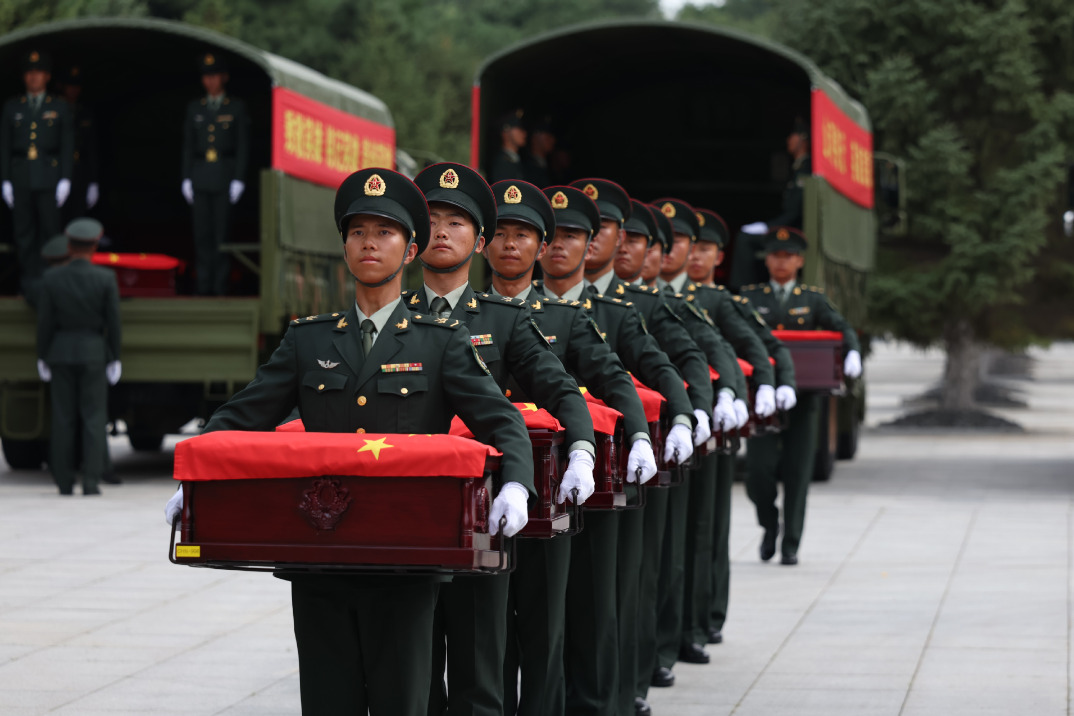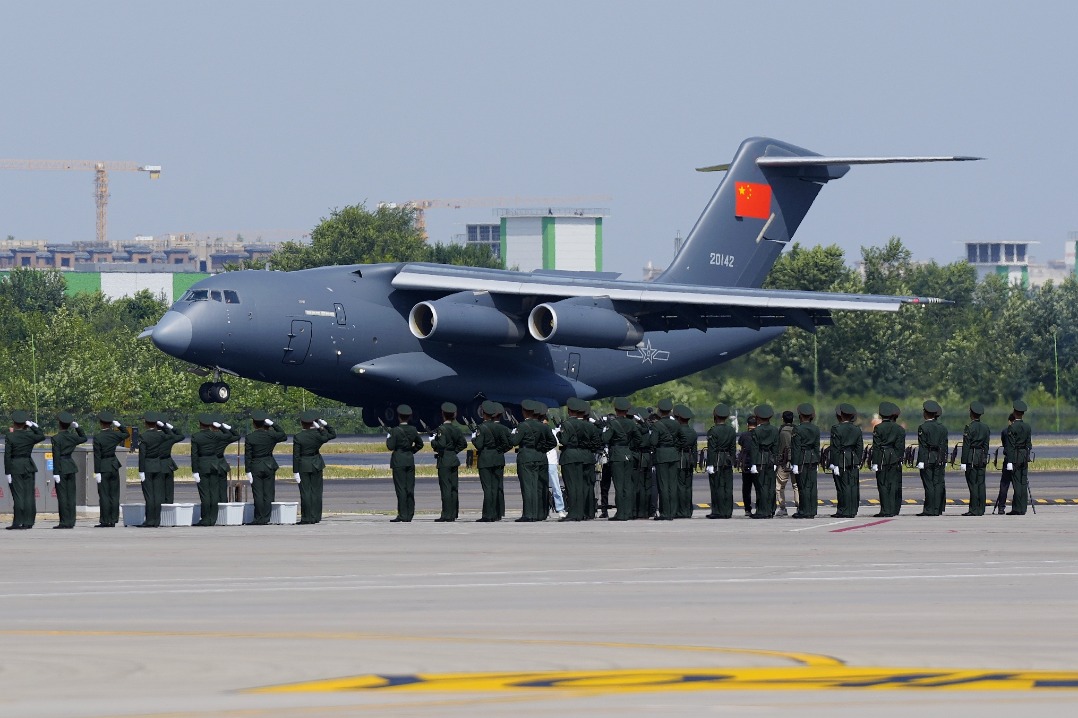Economic security focus of 5-year plan


With the country's economic recovery on a firm footing, China's leadership is shifting its focus to medium-term challenges. At the ongoing Fifth Plenary Session of the 19th Communist Party of China Central Committee, the focus is on the 14th Five-Year Plan (2021-25).
In response to a less-friendly global backdrop at present-especially the bipartisan consensus in the United States on containing China-Beijing seems determined to bolster its domestic market and technology to ensure the security of its supply chains and further open up its market to prevent any decoupling.
President Xi Jinping's "dual circulation" development concept is likely to feature prominently in the 14th Five-Year Plan. "Dual circulation" refers to making the domestic economy ("internal circulation") the mainstay, supplemented and reinforced by the global economy ("external circulation").
Greater focus on jobs, income redistribution
We (at Standard Chartered Bank) think the five-year plan will be based on estimated potential growth of 5-6 percent, with a greater focus on employment, income redistribution and social security to release China's consumption potential. Investment in technology may be increased through both State support and private sector participation. We also see a renewed impetus for the internationalization of the yuan-aimed at reducing reliance on the US dollar-dominant global financial system.
In macro policy terms, we expect China to refrain from stimulating growth to above-potential level in order to preserve policy space. In fact, the People's Bank of China, the country's central bank, has made it clear that it disapproves of zero or negative interest rate, and will likely be cautious in expanding its balance sheet to help stabilize the total debt ratio.
Xi has introduced the "dual circulation" development pattern to meet China's current challenges. Externally, USChina tensions have extended from trade and investment to technology transfer and geopolitics, while the US administration's approach to counter China's global influence now has rare bipartisan consensus.
Protectionism could rise in some countries
Furthermore, the COVID-19 pandemic risks exacerbating protectionist policies and stimulating the trend away from globalization. Internally, China's development is uneven across different regions and between urban and rural areas, while the income disparity has widened. And despite still being the largest manufacturing base globally, China is vulnerable to some countries' trade policies that could deny it access to key technologies and components-for example, in the semiconductor industry, where flagship Chinese enterprises remain heavily reliant on imports.
China is counting on its growing domestic market against the backdrop of a less-friendly external environment. Xi's recent speeches suggest China's leadership envisages an economic development model that relies largely on "internal circulation" to take advantage of a large and growing domestic market, and is supplemented by "external circulation". But with globalization facing resistance in some countries, China may find it difficult to count on external demand to further increase its global market share.
In addition, China's growth has already been driven significantly by domestic demand in recent years. China's domestic potential appears to be substantial-its urbanization ratio has topped 60 percent, its per capita GDP exceeds $10,000, and its middle-income group comprised nearly a third of its population in 2019.
We expect China to expand the domestic market, develop its indigenous technology and promote the internationalization of the yuan to ensure its economic and financial security regardless of the outcome of the US presidential election on Nov 3.
To expand the domestic market, we think the 14th Five-Year Plan will focus on creating jobs, increasing household income, reducing income disparity and strengthening the social safety net. It is also likely to direct more resources to R&D, build institutions and provide incentives to ramp up investment in basic science and high-tech industries (such as semiconductors, 5G, artificial intelligence, aircraft engines),
Besides, China may discourage excessive investment in the property sector. In the 13th Five-Year Plan, the R&D spending target for 2020 was set at 2.5 percent of GDP, but the actual ratio was just 2.19 percent in 2019. As such, we expect the government to set an R&D spending target of 2.5 percent of GDP for the next five years.
To ensure financial security, China may continue taking measures to make the yuan more usable in global trade and investment, further open up its financial markets, and offer more yuan-denominated assets, and strengthen the payment and clearing infrastructure, such as the cross-border interbank payment system, to reduce dependence on the dollar-dominant system.
Larger domestic economy beneficial to other nations
At a recent symposium attended, among others, by economists and sociologists, Xi sought to dispel worries about China shutting its doors on the rest of the world by emphasizing that the "dual circulation" policy would flourish in an open environment. In his vision, a larger domestic market would offer more opportunities to other countries, making China a magnet for international goods and factors for production.
And Vice-Premier Liu He recently highlighted the importance of global cooperation and participation in higher-level international competition.
China has recently renewed efforts to attract and retain foreign direct investment. This indicates China may want to prevent, or at least delay, possible decoupling engineered by the current US government.
Moreover, China is likely to expedite the process of signing and implementing of the Regional Comprehensive Economic Partnership, as well as intensify negotiations for the China-European Union Investment Agreement. We believe the success of China's "dual circulation" hinges not only on more investment in its relatively weak economic links, but also on its openness to global competition.
Promotion of innovation to be major policy push
Indeed, China has pledged to create a conducive environment for innovation by:
? Building a stable and predictable institutional environment for innovation, including by protecting intellectual property rights;
? Broadening market access and ensuring fair competition to give full rein to the private sector's creativity;
? Leveraging the role of the State and State-owned enterprises to make breakthroughs in the key areas of technology competition; and
? Shortening the negative list and providing pre-establishment national treatment to foreign enterprises.
We expect the government to reserve macro policy room with an eye on long-term competition. As the second-largest economy in the world with a fast-growing market, China's macro policy is driven largely by its domestic conditions and considerations. For example, its macro policy response to COVID-19 was very different from that of major Western economies.
China focused on protecting its companies and employees through tax and fee cuts, and credit support, instead of providing direct income support to households and engaging in quantitative easing to bolster asset prices. Its aim was to resume production as soon as it managed to largely contain the outbreak, so that workers could return to work and maintain their livelihoods. A high savings ratio and, in our view, the "safety net" provided by China's extended family model likely supported this approach.
With its recovery now on track, China appears to be exiting its "emergency mode" with a view to reduce its financial risks.
The author is the chief economist of Greater China and North Asia with Standard Chartered Bank.
The views don't necessarily reflect those of China Daily.
If you have a specific expertise and would like to contribute to China Daily, please contact us at opinion@chinadaily.com.cn , and comment@chinadaily.com.cn


































